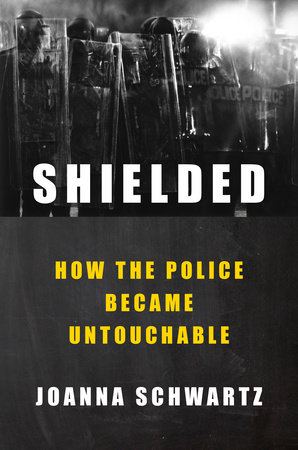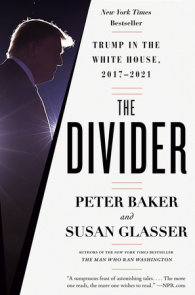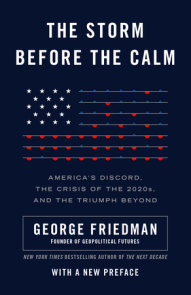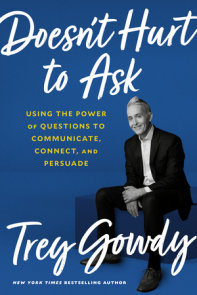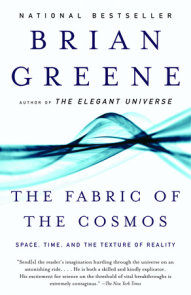READERS GUIDE
Questions and Topics for Discussion
1. The case of Monroe v. Pape—in which a Chicago officer unlawfully charged into a family’s home and assaulted them—“breathed new life” into a previously little-used statute called Section 1983. Section 1983 had been enacted by Congress in the post-Civil War Reconstruction era to allow for people to sue in federal courts if their rights had been violated. Why was it crucial at the time to allow such lawsuits to be brought in federal, rather than state, courts? What advantage did federal courts hold when Monroe v. Pape was filed?
2. The revitalization of Section 1983 through Monroe v. Pape was applauded by civil rights lawyers and activists but also drew many critics—critics whose fears would eventually inspire rollbacks of some of Monroe’s protections. What did they believe to be dangers of the Supreme Court’s decision allowing Section 1983 suits against police in Monroe? In the decades following Monroe, what new limitations on Section 1983 did the Supreme Court put into place?
3. Many private attorneys are paid by their clients based on contingency fees—that is, they receive no compensation unless the case is successful, and, if successful, are paid a percentage of their client’s winnings. Why did courts and Congress believe that this arrangement was detrimental to the uptake of civil rights cases? How was Section 1988—passed by Congress—intended to improve on the contingency-fee arrangement for civil rights lawyers? How did the Supreme Court’s decisions undermine the goals of Section 1988?
4. When Javaid Iqbal attempted to sue the enforcers of a post-9/11 detention policy for discrimination, his case was dismissed because his complaint was not “plausible”—according to the Supreme Court, his claims were based on “conclusions” rather than “facts,” and so could not proceed to discovery, the point at which each side can demand evidence from the other. What are the arguments for and the arguments against the pleading requirements put in place by Iqbal v. Ashcroft? What are judges’ fears about allowing cases to proceed to discovery too easily? Are there any grounds to these claims? What effects do stricter pleading requirements have on civil rights cases such as Vicki Timpa’s?
5. The Fourth Amendment of the Constitution is meant to protect people from “unreasonable searches and seizures” by law enforcement and is the reason why warrants or “probable cause” are often required for police to search people and their property. However, a landmark case in the 1960s expanded police officers’ right to search people from needing to have “probable cause” to needing only “reasonable suspicion.” What kinds of changes did this signify for citizens’ protections? In what ways were similar arguments later applied to other police actions, such as use of force?
6. In Chapter 4, we learn about how Deputy Sylvester of Leesburg, Florida, knocked at Andrew Scott’s and Miranda’s Mauck’s home and fired shots when Scott opened the door, killing Scott. When their parents filed a lawsuit against Sylvester, the judge sided with Sylvester in saying that Scott’s and Mauck’s Fourth Amendment rights were not violated. What was the judge’s reasoning? Do you agree or disagree with it?
7. Qualified immunity began as a way to protect police from liability in cases in which they mistakenly believed themselves to be following the law—the idea being that their actions were made in “good faith.” However, in the case Harlow v. Fitzgerald, the Supreme Court ruled that officers are entitled to qualified immunity anytime they do not violate “clearly established law.” How did this new interpretation come to expand the protections of qualified immunity? What is the right to an immediate appeal, in this context, and what are its effects? In recent years, how has qualified immunity come to be reconsidered?
8. Monell v. Department of Social Services allowed for cities and counties to be held liable for the actions of their police officers, as long as it could be proven that one of their policies or customs was responsible for the officer’s violation of law. In what ways does it remain difficult to actually prove governments’ responsibility? How did these challenges affect lawsuits brought against the City of Vallejo? Why do Monell claims still matter even in cases where claims are successfully brought against individual officers?
9. A jury is an integral part of a trial and can bear a strong influence on its outcome. Though efforts are made to try to ensure that juries are justly selected, the reality is that juries are not always “fair cross sections” of a community. What are some of the methods used to select juries, and in what ways do they prevent a fair cross section of a community from participating?
10. In the case of Officer Peter Delio’s use of excessive force against Rob Liese, the jury found Officer Delio violated Rob Liese’s constitutional rights but awarded him nothing in damages despite being injured to the point of hospitalization. Why do you think the jury ruled this way? Do you agree or disagree with their verdict, and why?
11. What is injunctive relief? Why, in City of Los Angeles v. Lyons—in which a Los Angeles police officer used excessive force on a man during a traffic stop, putting him in a chokehold—did the Supreme Court not grant Lyons injunctive relief? What precedent did this case establish in terms of courts granting injunctive relief, and how did it affect cases going forward? The court hearing James Campbell’s case relied on Lyons when ruling that he was not entitled to seek injunctive relief. How, then, did Campbell eventually get an agreement from the Indianapolis Police Department not to strip search people in public?
12. For what reasons do local governments generally choose to indemnify their officers—meaning to agree to pay settlements and judgments entered against them? Why might they still initially threaten not to indemnify or withhold decisions about indemnification over the course of a trial? What do you see as the pros and cons of indemnification? What is the danger for a plaintiff when a city chooses not to indemnify? What are some of the possible disadvantages when a city chooses to indemnify its officers?
13. Settlements and judgments in police misconduct cases are rarely paid by individual officers, and are rarely taken from the police departments’ budgets—instead, they come from general city funds. What are the arguments for and against making these payments from the city’s central budget?
14. When the author was working on a case involving corrections officers at Rikers Island prison, she learned that officers often know nothing about the lawsuits filed against them, and many of the their supervisors had no idea how many times their officers had been sued, nor the costs paid for their misconduct. What do you see as the possible dangers of a system in which information about lawsuits is not relayed to the officers being sued or their supervisors? What efforts have New York City officials made to try to correct this issue? Why do you think it has been so difficult to get the New York City Police Department to pay attention to lawsuit information?
15. What suggestions does the author make for fixing some of the systemic imbalances that protect police from being held accountable for misconduct? From what you learned, can you think of other possible changes that might help create a more just environment for civil rights cases? If you were to advocate for some of these changes, which level of government—federal, state, or local officials—do you think would be most likely to act?







